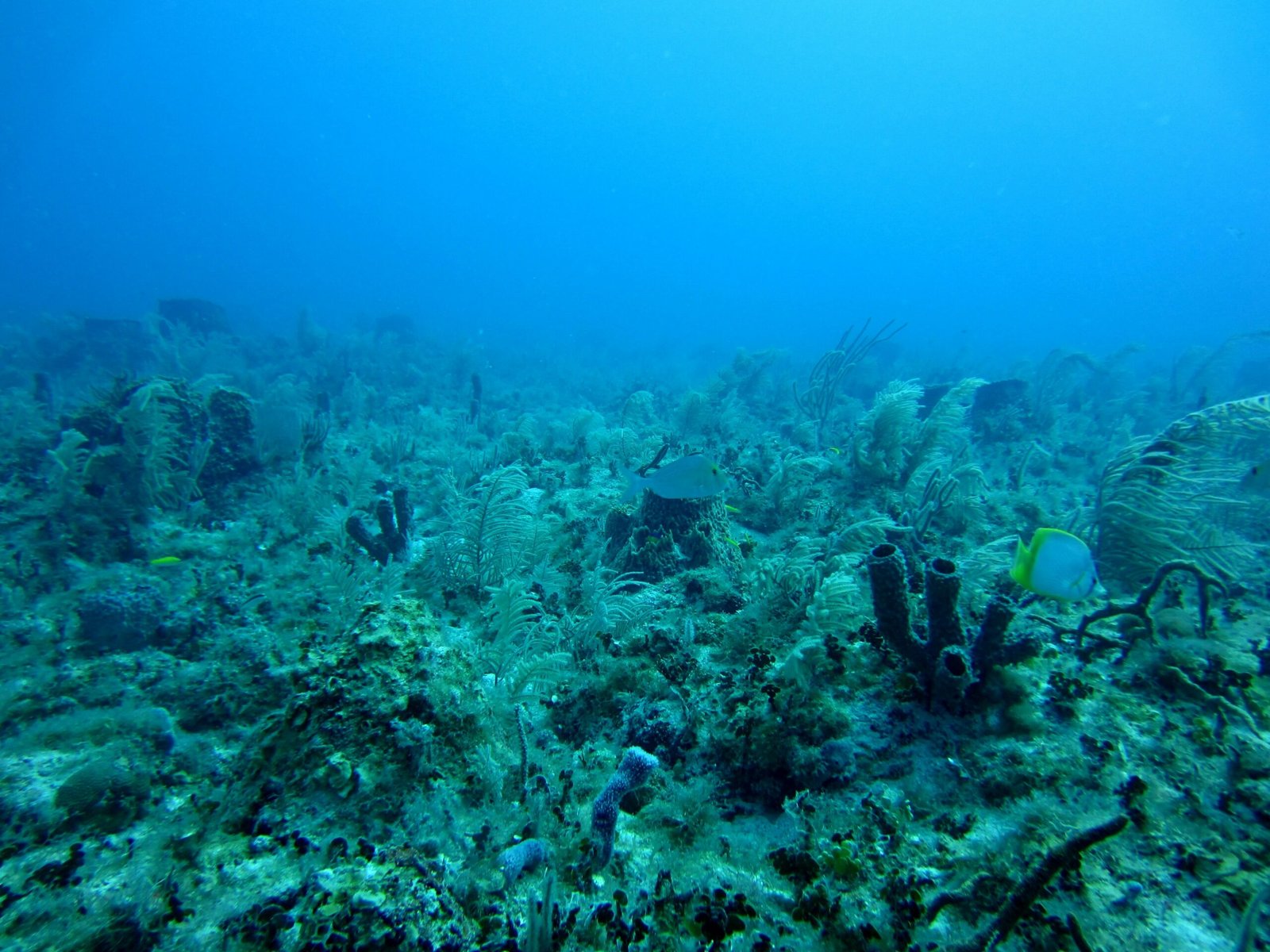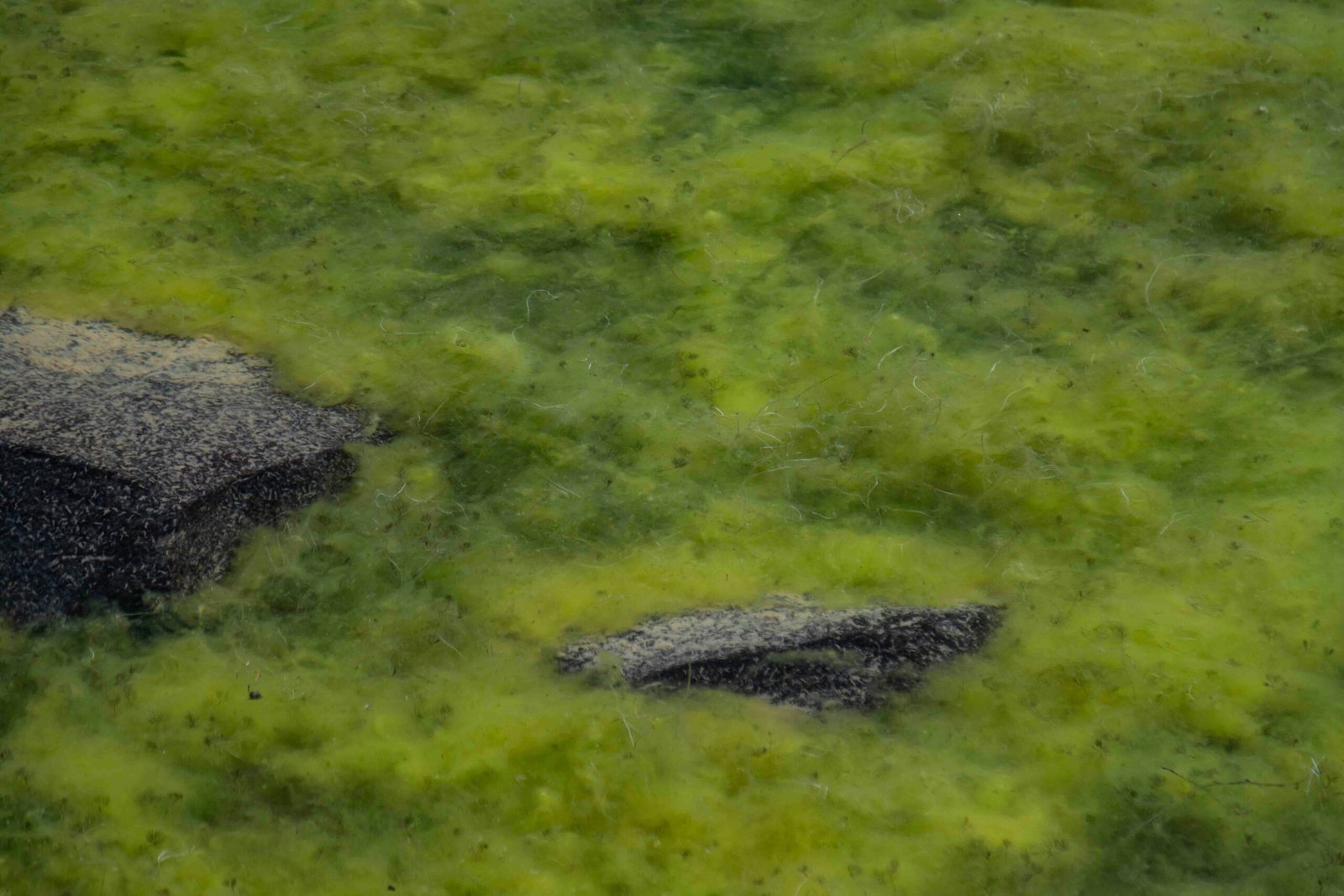Introduction to Algal Cells
Algae represent a vast and diverse group of photosynthetic organisms that inhabit aquatic environments across the globe. These unique organisms range from microscopic single-celled microalgae to large multicellular seaweeds, showcasing remarkable adaptability and diversity. The study of algal cell structures is of paramount importance, as these cells play significant roles in both natural ecosystems and various commercial applications.
In aquatic ecosystems, algae are integral components, contributing to primary production and forming the base of the food web. They provide oxygen through photosynthesis, which is essential for the respiration of aquatic organisms. Algae also play a crucial role in nutrient cycling, influencing the balance of key elements such as nitrogen and phosphorus. This ecological significance underscores the need to thoroughly understand the structural intricacies of algal cells.
Beyond ecological contributions, algae offer immense commercial potential. They are utilized in a variety of industries, ranging from agriculture to pharmaceuticals. For example, certain algal species are cultivated for their oil-rich biomass, which can be processed into biofuels. Additionally, algae serve as sources of valuable compounds such as antioxidants, pigments, and vitamins, which are utilized in nutraceuticals and cosmetics. The structural characteristics of algal cells often dictate their utility in such applications, further emphasizing the importance of comprehensive research in this domain.
Furthermore, advancements in biotechnology have unleashed potentials within algal research. Genetic engineering and synthetic biology hold promise for optimizing algal strains to enhance their productivity, resilience, and commercial viability. The exploration of algal cell structures stands at the forefront of these innovations, paving the way for breakthroughs in sustainable energy, environmental management, and beyond.
In summary, the diversity of algal species, coupled with their ecological and commercial relevance, underscores the necessity of an in-depth understanding of algal cell structures. This foundational knowledge is crucial for leveraging algae’s full potential, driving forward ecological conservation and diverse biotechnological applications.
Cell Wall Composition and Structure
The cell wall composition and structure of algae are integral to understanding their biology and ecological roles. Algal cell walls exhibit remarkable diversity in their biochemical makeup, reflecting the wide range of environments inhabited by these organisms. Common components shared among various algal groups include cellulose, glycoproteins, and polysaccharides, which contribute to the primary structural and protective functions of the cell wall.
Cellulose, a predominant polysaccharide, provides rigidity and strength, forming a crucial structural framework. Accompanying cellulose, glycoproteins play essential roles in cell adhesion, signaling, and interactions with the external environment. Additionally, diverse polysaccharides such as alginates in brown algae, agar and carrageenan in red algae, and xyloglucans in green algae offer further structural support and flexibility, adapting to the unique demands of different habitats.
Unique substances also characterize the cell walls of certain algal species. For instance, pectin, commonly associated with plant cell walls, is notably present in the cell walls of some green algae, enhancing their ability to withstand mechanical stress and dehydration. Diatoms, a major group of microalgae, possess cell walls enriched with silica, forming intricate and sturdy frustules that afford protection and contribute to the buoyancy and light-scattering properties vital for photosynthesis.
The structure of algal cell walls is complex, often featuring multiple layers with varying biochemical properties. These layers are intricately organized, with a high degree of cross-linking between the molecular components, ensuring both flexibility and resilience. The biochemical properties of these cell walls are essential for the algae’s survival, enabling them to endure environmental challenges such as salinity fluctuations, desiccation, and pathogen attacks.
In summary, the composition and structure of algal cell walls are pivotal for their protective, structural, and interactive functions. The varied biochemical constituents, from cellulose and glycoproteins to unique substances like pectin and silica, underscore the adaptability of algae to diverse environments, highlighting their evolutionary ingenuity and ecological significance.
Cytoplasmic Organelles in Algal Cells
Algal cells, like other eukaryotic cells, contain a variety of cytoplasmic organelles, each playing crucial roles in cellular function and maintenance. Central to the organization of algal cells is the nucleus, which houses the cell’s genetic material and orchestrates activities such as growth, division, and response to environmental stimuli. The nucleus is essential for the regulation of gene expression, enabling algae to adapt and survive in varying conditions.
Among the numerous organelles, chloroplasts are of particular importance in algal cells. These organelles are the main sites of photosynthesis, where light energy is converted into chemical energy, sustaining the cell’s metabolic needs. Chloroplasts contain pigments like chlorophylls and carotenoids that capture light energy, driving the synthesis of organic compounds from carbon dioxide and water. Unique to algal chloroplasts is their diversity in structure; different algal groups exhibit varied chloroplast forms, adapting to diverse light environments.
One notable structural feature often observed in many algal chloroplasts is the presence of pyrenoids. Pyrenoids serve as centers for starch production and storage, vital for the algal cell’s energy management. Additionally, thylakoids, the membrane-bound structures within chloroplasts, can exhibit different arrangements. In some algae, thylakoids are organized into stacks, while in others, they may form loose, parallel arrays, reflecting adaptations to optimize light capture and photosynthesis efficiency under different conditions.
Mitochondria are another pivotal organelle in algal cells, responsible for producing ATP through cellular respiration. This process generates the energy required for various cellular activities and supports the high energetic demands of photosynthesis. Mitochondria also play a role in maintaining cellular homeostasis and signaling pathways.
Ribosomes, either free in the cytoplasm or attached to the endoplasmic reticulum, are essential for protein synthesis. These molecular machines translate genetic information into proteins, which perform myriad functions within the cell.
Understanding the roles and structures of these cytoplasmic organelles in algal cells illuminates the complexity and efficiency of these photosynthetic organisms, offering insights into their adaptability and ecological success in diverse aquatic environments.
Pigment Systems in Algae
Algae exhibit a remarkable diversity in their pigment systems, allowing them to adeptly capture light energy for photosynthesis. The primary pigments involved in this process are chlorophylls, carotenoids, and phycobilins. These pigments not only define the striking colors of various algal groups but also play pivotal roles in their physiological functions and ecological niches.
Chlorophylls are the most prevalent pigments in algae. They are essential for absorbing light, particularly in the blue and red spectrum, which is then converted into chemical energy. Green algae primarily contain chlorophyll a and b, lending them their characteristic green hue. On the other hand, brown algae contain chlorophyll a and c, along with fucoxanthin, a carotenoid that gives them their brownish color. Red algae, distinguished by their deep red or purplish complexion, are rich in chlorophyll a and d, as well as phycobilins – specifically phycoerythrin and phycocyanin.
Carotenoids are accessory pigments that capture light energy and transfer it to chlorophylls. They also provide protective mechanisms by dissipating excess energy, thereby preventing photodamage. Beta-carotene, lutein, and zeaxanthin are some of the notable carotenoids found in green algae. The composition of carotenoids varies across different algae, contributing to a broad range of colors and enhancing their adaptability to varying light environments.
Phycobilins are unique to red algae and cyanobacteria. These water-soluble pigments are highly efficient in capturing light under low-light conditions, such as at greater ocean depths. Phycoerythrin and phycocyanin are the principal phycobilins, absorbing light in the green to yellow part of the spectrum and extending the range of light wavelengths that algae can utilize for photosynthesis.
The diversity of pigment systems in algae is an evolutionarily advantageous trait. It allows these organisms to inhabit various ecological niches, from the well-lit surface waters to the dimly lit depths. By tailoring their pigment composition, algae can optimize light absorption, enhance energy efficiency, and ensure survival across a broad range of light environments.
Photosynthetic Mechanisms
Photosynthesis in algae is a complex process that enables these organisms to convert light energy into chemical energy, thus sustaining their growth and survival. This conversion of energy primarily occurs through a series of reactions known as light-dependent and light-independent reactions. The core principle of photosynthesis in algae is similar to that in higher plants, but there are notable differences that tailor their efficiency and productivity in various ecological niches.
Light-dependent reactions, also known as the photochemical phase, take place in the thylakoid membranes of chloroplasts. During these reactions, chlorophyll pigments absorb light energy, which is then used to split water molecules (photolysis) into oxygen, protons, and electrons. The energy harnessed from light is subsequently used to generate ATP and NADPH, essential energy carriers that fuel the next stage of photosynthesis.
The subsequent phase, the light-independent reactions, commonly referred to as the Calvin cycle, occurs in the stroma of chloroplasts. Here, the ATP and NADPH produced in the light-dependent reactions drive the conversion of carbon dioxide into glucose via a series of enzyme-mediated steps. Carbon fixation, reduction, and regeneration of ribulose-1,5-bisphosphate (RuBP) are key steps in the Calvin cycle. The resulting glucose provides a vital source of energy and organic carbon for the algae.
Notably, different groups of algae exhibit variations in their photosynthetic mechanisms, which affect their efficiency and ecological adaptability. For instance, green algae (Chlorophyta) and red algae (Rhodophyta) possess distinctions in their light-harvesting complexes and accessory pigments, leading to differences in their light absorption spectra. These differences enable various algal groups to exploit diverse light environments, from surface waters to deeper oceanic zones, optimizing their photosynthetic efficiency and ecological productivity.
Moreover, some algae, like diatoms and brown algae (Phaeophyceae), have developed unique adaptations, including the presence of fucoxanthin, which extends their light absorption capabilities. These adaptations significantly contribute to their success and ecological roles in different marine environments. The intricacies in the photosynthetic processes of algae underscore their critical contributions to global primary productivity and carbon cycling.
Reproductive Strategies in Algae
Algae exhibit a broad spectrum of reproductive strategies, which are essential for their survival, proliferation, and ecological adaptability. These strategies are broadly categorized into as and sreproduction, each with distinct mechanisms that confer various evolutionary advantages.
Reproduction in algae can occur through multiple methods, including binary fission, spore formation, and fragmentation. Binary fission involves a single algal cell dividing to form two genetically identical daughter cells, ensuring rapid population growth under favorable conditions. Spore formation, another common method, involves the production of specialized cells known as spores, which can endure harsh environmental conditions and germinate when conditions improve. Fragmentation is yet another strategy wherein a portion of the algal body breaks off and develops into a new, independent organism, contributing to the dispersal and colonization of new habitats.
On the other hand, reproduction in algae is characterized by more complex processes such as gametogenesis and zygote formation. During gametogenesis, specialized cells, called gametes, are produced. These haploid cells can be isogamous, where gametes are morphologically similar, or anisogamous, where gametes differ in size or form. The fusion of these gametes results in the formation of a diploid zygote, which subsequently undergoes meiosis to produce genetically diverse offspring. This genetic variability is crucial for the adaptation and evolution of algal species, as it enhances their ability to respond to environmental stresses and changes.
The evolutionary advantages of these reproductive strategies in algae are manifold. Reproduction allows for rapid population expansion and ensures continuity in stable environments, while reproduction introduces genetic diversity, aiding in adaptability and resilience. Ecologically, these strategies impact the dynamics of aquatic ecosystems, influencing species interactions, community structure, and the overall functioning of the ecosystem.
In conclusion, the reproductive strategies of algae, encompassing both as and s methods, play a pivotal role in their survival, adaptability, and ecological significance. Understanding these strategies offers insights into the intricate balance and complexity of aquatic life forms.
Algal Life Cycles
Algal life cycles encompass a range of complex patterns, marked by the alternation of generations, which consists of distinct haploid and diploid stages. This alternation is a remarkable feature, enabling them to survive in a variety of environments and adapt to various ecological niches. The haploid stage, known as the gametophyte, involves a single set of chromosomes, while the diploid stage, referred to as the sporophyte, contains two sets of chromosomes. The transition between these stages is a crucial mechanism that drives the reproduction and survival of algae.
During the life cycle of algae, the haploid gametophyte produces gametes, which are the reproductive cells. These gametes fuse during fertilization to form a diploid zygote. This zygote then develops into a diploid sporophyte, which, in turn, undergoes meiosis to produce haploid spores. These spores eventually grow into new gametophytes, thereby completing the cycle. The seamless transition between haploid and diploid stages underpins the resilience and evolutionary adaptability of algae.
Diversity in life cycle patterns among different algal groups is significant. One classic example is the isomorphic alternation of generations, where the haploid and diploid stages appear morphologically similar, as seen in some green algae. In contrast, heteromorphic alternation is characterized by the morphological dissimilarity between the gametophyte and sporophyte stages. This is prevalent in various brown and red algae, where the stages can differ dramatically in form and size.
Furthermore, some algal groups exhibit a predominantly haploid life cycle with a brief diploid phase, while others may have an extended diploid phase with transient haploid forms. For instance, the green algae Chlamydomonas alternates between haploid and diploid forms within a largely haploid-dominant life cycle, whereas the brown algae Laminaria exhibit a more complex and prolonged diploid phase. Such diversity reflects the evolutionary pressures and environmental contexts in which these organisms thrive. By understanding these intricate life cycles, researchers can better appreciate the adaptive strategies that enable algae to continue flourishing across diverse habitats.
Applications and Future Directions
The understanding of algal cell structures has a far-reaching impact on various industries, demonstrating its importance beyond basic biological research. One notable application is in the production of biofuels. Algae are prolific producers of lipids, which can be converted into biodiesel. This makes algae a sustainable and potentially more efficient alternative to conventional fossil fuels, given algae’s rapid growth rates and ability to thrive in a range of environments, including wastewater.
In the pharmaceutical realm, unique compounds extracted from algal cells show promising benefits. Certain species possess bioactive molecules with antiviral, antibacterial, and anticancer properties. This expanding field of research emphasizes the potential of algae in developing novel therapeutic agents and enhancing drug formulations. Moreover, algal pigments, such as chlorophylls and carotenoids, are increasingly valued for their antioxidant properties, finding applications in both medication and dietary supplements.
Algae also play a significant role in nutrition, particularly as sources of essential vitamins, minerals, and omega-3 fatty acids. The incorporation of microalgae like Spirulina and Chlorella into food products taps into the growing demand for plant-based and sustainable nutritional alternatives. Furthermore, algal fibers are being explored as functional ingredients to improve food texture and shelf-life.
Looking towards future prospects, advances in genetic engineering and biotechnology could unlock new capabilities in algal strains. These innovations aim to enhance algal efficiency in carbon capture, biofuel production, and synthesis of high-value compounds. However, the pursuit of these technological breakthroughs comes with challenges. Issues such as the scalability of algal biomass production, economic viability, and potential ecological impacts must be addressed.
Ethical considerations are also paramount in the expansion of algal biotechnology. The environmental footprints of large-scale algal cultivation, the genetic modification of algal strains, and their socio-economic implications require careful evaluation and responsible governance. As we delve deeper into harnessing algal properties, it becomes imperative to balance technological advancements with sustainable and ethical practices.





















+ There are no comments
Add yours